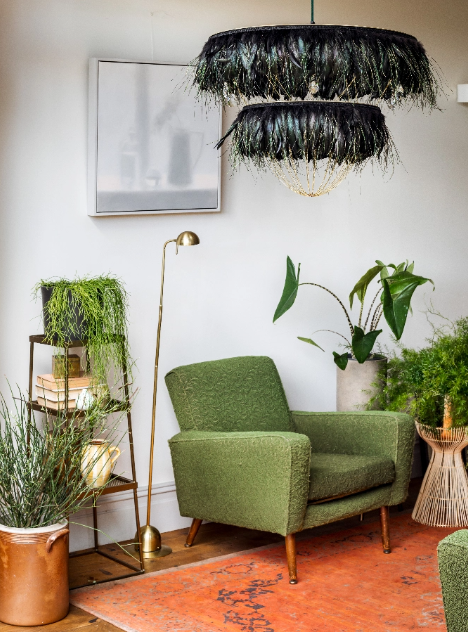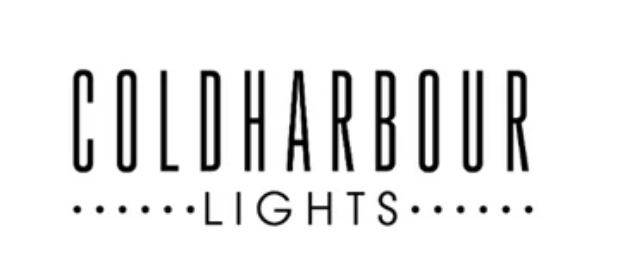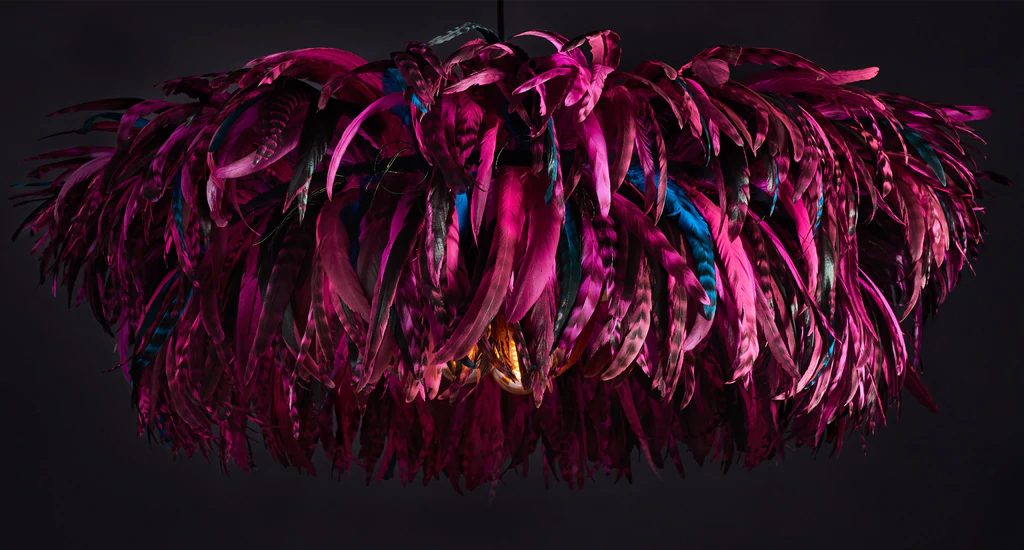
Understanding the Concept of Maximalism
In the realm of design, Maximalism stands as a celebration of abundance. It's a philosophy that embraces the 'more is more' ethos. Maximalism is a counterpoint to the pared-down aesthetics of Minimalism. It revels in complexity, layering, and the eclectic.
This article delves into the concept of Maximalism, we explore its roots, characteristics, and influence across various design fields. From interiors to fashion, Maximalism has left its vibrant mark. It's a style that encourages personal expression and the mixing of styles and eras.
But what makes a design 'Maximalist'? How does it differ from mere clutter or hoarding? Join us as we journey into the world of Maximalism, a realm of excessive design and eclectic aesthetics.
The Essence of Maximalism

Maximalism is a design movement characterised by excess and redundancy. It's a celebration of the ornate, the intricate, and the abundant. This design philosophy encourages the layering of patterns, textures, and colours. It's about creating spaces that are rich in detail and sensory experiences.
Maximalism is about personal expression. It allows individual tastes, narratives, and histories to shine through the design. The guiding principle of Maximalism is 'more is more'. It's about embracing complexity and rejecting the notion of 'less is more'.
Maximalism is not just about accumulation. It's about thoughtful curation, creating a cluttered yet curated aesthetic of abundance.
Historical Roots and Cultural Influences
Maximalism has roots in periods of opulence and extravagance. We can trace it back to the Baroque and Rococo periods, known for their ornate detailing and rich textures.
Cultural and artistic movements have also influenced Maximalism. From the vibrant patterns of global cultures to the bold prints of Pop Art. These influences are evident in the eclectic mix of Maximalist design.
Maximalism also reflects the influence of technology. With the advent of digital design tools, designers can create more complex and layered designs. The resurgence of Maximalism in contemporary design trends is a reaction against the perceived sterility of modern Minimalism. It's a return to the sensory richness and personal expression that Maximalism embodies.
Maximalism vs. Minimalism: A Comparative Analysis
Maximalism and Minimalism are two opposing design philosophies. While Minimalism is about simplicity and functionality, Maximalism is about complexity and sensory richness.
Minimalism embraces the 'less is more' ethos. It's about reducing design elements to their essential qualities. In contrast, Maximalism is about 'more is more'. It's about layering and mixing different styles, patterns, and textures.
Minimalist spaces often use clean lines, neutral colours, and a sense of calm. Maximalist spaces, on the other hand, are vibrant, eclectic, and filled with personal narratives. While Minimalism seeks to create a sense of order and tranquillity, Maximalism embraces chaos and complexity. It's about creating spaces that are dynamic, engaging, and full of life.
Understand the ideas behind Biophilic Design in our previous article.
Characteristics of Maximalist Design

Maximalist design embraces complexity, it's about layering different styles, patterns, and textures to create a rich and engaging aesthetic. The use of bold and vibrant colours is a hallmark of Maximalist design. These colours add drama and energy to the space, creating a visually stimulating environment.
Ornate detailing and intricate patterns are also key features of Maximalist design. These elements add depth and interest to the space, creating a sense of discovery and surprise.
Embracing Eclecticism and Layering
Maximalism encourages the mixing of different styles and eras. This eclectic approach creates a unique and personalised aesthetic that reflects the individual's tastes and narratives.
Layering is a crucial aspect of Maximalist design. It's about creating depth and complexity through the layering of patterns, textures, and objects. This layering is not random or arbitrary. It's a thoughtful and intentional process that creates a sense of order to chaos, a cluttered yet curated aesthetic.
The Role of Colour and Pattern
Colour plays a significant role in Maximalist design, bold and vibrant colours create a dynamic and energetic space.
Patterns are also a key feature of Maximalist design. From intricate feather designs to bold geometric patterns, these elements add visual interest and depth to the space. Maximalist design encourages the mixing of different patterns. This creates a rich and layered aesthetic that is visually engaging and stimulating.
Learn more about using colour in your interior design.
Ornate Detailing and Textural Richness
Ornate detailing is a characteristic feature of Maximalist design. From intricate mouldings to elaborate furniture pieces, these details add a sense of opulence and luxury to the space.
Texture also plays a crucial role in Maximalist design. Rich textures add a tactile dimension to the space, enhancing the sensory experience. From light soft feathers to rough-hewn woods, these textural elements create a sense of warmth and cosiness in the space. They add depth and interest, making the space feel more inviting and lived-in.
View our range of feather lampshades here.
Maximalism in Practice

Maximalism is not confined to a specific field. It manifests in various areas, from interior design to fashion. The key is to create a cohesive yet complex aesthetic. This requires a deep understanding of design principles and a keen eye for detail.
Interior Spaces and Home Decor
Maximalist interiors create richness and complexity in an interior. They use a variety of patterns, textures, and colours, creating a visually stimulating environment. Personal expression plays a significant role in Maximalist home decor. The space is a reflection of the individual's tastes, narratives, and histories.
The challenge lies in balancing cohesion and chaos.
Fashion and Personal Style
Maximalism also manifests in fashion, it also uses bold prints, exaggerated forms, and a mix of different styles. The key is to create a unique and personalised aesthetic.
The challenge lies in balancing boldness and wearability. It's about creating a look that is visually engaging yet comfortable and practical.
Public Spaces and Commercial Design
Maximalism is also used in public spaces and commercial design. It's about creating memorable experiences through sensory richness and visual complexity. The key is to create a space that is engaging and immersive.
The Psychology of Maximalism

Maximalism is more than just a design aesthetic. It's a sensory experience that can have a profound impact on our mood and creativity. Maximalist environments use visual stimuli, they can stimulate the senses, spark curiosity, and inspire creativity.
However, they can also be overwhelming. It's important to strike a balance between stimulation and comfort to create a space that feels inviting and inspiring.
Sensory Experience and Emotional Impact
Maximalist design can evoke a range of emotions. The abundance of colours, patterns, and textures can create a sense of joy and excitement. On the other hand, complexity and richness can also evoke a sense of awe and wonder. It's about creating a space that engages the senses and stirs the emotions.
However, it's important to consider the individual's sensory preferences. What feels stimulating to one person might feel overwhelming to another. It's about creating a space that feels personally enriching and emotionally resonant.
The Future of Maximalism
Maximalism is not a static concept. It evolves with the times, reflecting societal changes and technological advancements. In the digital age, we have access to a vast array of visual stimuli. This has opened up new possibilities for Maximalist design, allowing for more complex and layered compositions.
However, the future of Maximalism also depends on its ability to adapt to changing attitudes towards sustainability and ethical consumption.
Sustainability and Ethical Considerations
Maximalism has the potential to be a sustainable design philosophy. It encourages the repurposing and layering of existing items, reducing the need for new purchases. However, it's important to consider the source of the items. We should take ethical considerations into account, such as the environmental impact of the materials.
90% of our materials are produced in the UK and most of them are delivered by companies working towards a carbon neutral service. We reuse most of the packaging that our materials are delivered in, without affecting the aesthetic of our packaging. Coldharbour Lights is a proud member of Blue Patch, the national social enterprise that funds community owned renewable energy projects. Find us in the Blue Patch’s Sustainable Directory.
The Evolving Aesthetic of Maximalism
The aesthetic of Maximalism is constantly evolving. Cultural trends, artistic movements, and individual creativity influence the design's future. In the future, we might see a more nuanced approach to Maximalism. It could incorporate elements of minimalism, creating a balanced aesthetic that combines complexity with simplicity.
Maximalism is not just about excess. It's about richness, diversity, and personal expression. It's a design philosophy that celebrates the beauty of abundance and the joy of sensory exploration.
Conclusion - Is Maximalism Right For You?
Maximalism is a design philosophy that celebrates abundance, complexity, and personal expression. It stands in contrast to Minimalism, embracing the 'more is more' ethos. With roots in periods of opulence like the Baroque and Rococo eras. Maximalism reflects influences from global cultures, Pop Art, and modern digital design tools.
Ultimately, Maximalism celebrates the beauty of abundance and the joy of sensory exploration. To embrace more view our feather chandeliers.
Check out the article we were featured in: 6 Expert Tips on How to Master Organized Maximalism | Redfin
(Parent company of ApartmentGuide and Rent.)




